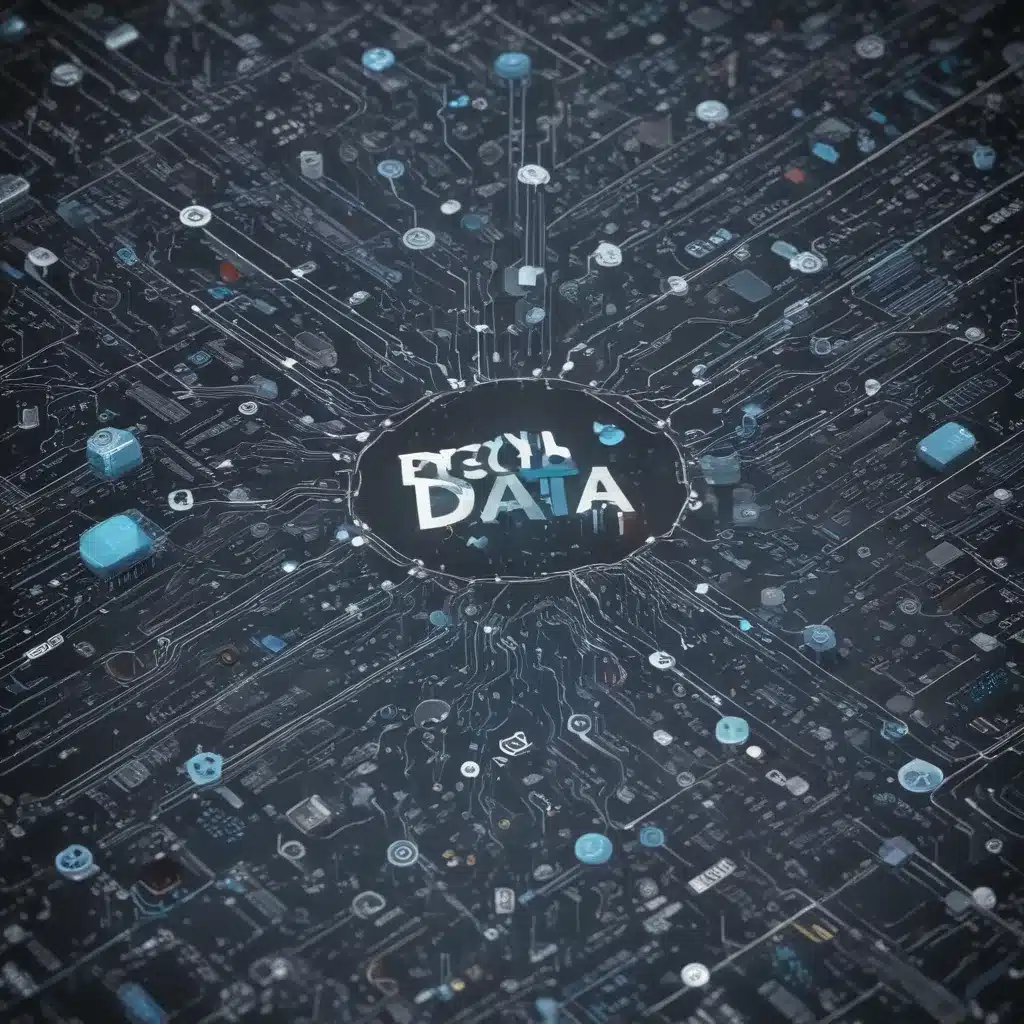The Tiny Titans Transforming Our World
As I sit here in my office, staring out the window at the bustling London streets, I can’t help but marvel at the incredible technological advancements that have quietly revolutionized our world. It’s easy to get caught up in the dazzling headlines about the latest smartphones or gaming consoles, but the real game-changers are often the unassuming sensors that have permeated every corner of our lives. [1]
These diminutive devices, some no bigger than a grain of rice, are collecting and transmitting data at an astonishing rate, ushering in a new era of “Big Data” that is transforming industries, solving complex problems, and improving our daily lives in ways we could scarcely have imagined. [2]
The Rise of the Sensor Revolution
It all started with a simple premise: if we could gather enough data about our surroundings, we could gain unprecedented insights and make more informed decisions. Sensors, with their ability to measure everything from temperature and humidity to air quality and motion, have been the key to unlocking this treasure trove of information. [3]
As technology has advanced, these sensors have become smaller, more affordable, and more versatile than ever before. They can now be seamlessly integrated into our homes, our workplaces, and even our bodies, quietly gathering data that was once impossible to obtain. [4]
From tracking the movement of endangered species to monitoring the health of crops, these tiny titans have become indispensable tools for researchers, businesses, and policymakers alike. [5] And as the Internet of Things (IoT) continues to expand, the potential for sensor-driven data collection and analysis is only going to grow. [6]
The Power of Precision
One of the most remarkable aspects of this sensor revolution is the level of precision it has brought to our understanding of the world around us. Gone are the days of relying on sporadic, imprecise measurements – these sensors can provide a steady stream of high-resolution data that allows us to identify patterns, predict trends, and make data-driven decisions with unprecedented accuracy. [7]
Take, for example, the case of a farmer looking to optimize their crop yields. By deploying a network of sensors throughout their fields, they can monitor soil moisture, temperature, and other key variables in real-time. This allows them to precisely time their irrigation, fertilization, and pest control efforts, leading to higher yields, reduced waste, and a more sustainable operation. [3]
Unlocking the Potential of Big Data
Of course, the sheer volume of data generated by these sensors has presented its own unique challenges. As the amount of information explodes, we’ve had to develop new tools and techniques to effectively harness its power. This is where the concept of “Big Data” comes into play – the ability to collect, store, and analyze massive datasets to uncover insights and patterns that would have been impossible to detect with traditional methods. [4]
Businesses across a wide range of industries have already begun to reap the benefits of Big Data analytics. Retailers can use sensor data to optimize their store layouts and inventory management, while transportation companies can leverage real-time traffic data to improve their routes and reduce fuel consumption. [7] And in the realm of healthcare, sensor-driven data is helping doctors and researchers develop more personalized treatment plans and make earlier diagnoses of various conditions. [5]
The Future is Smaller, Smarter, and More Connected
As we look to the future, it’s clear that the sensor revolution is only just beginning. As these devices become even smaller, more powerful, and more interconnected, the potential for transformative change is virtually limitless. [6]
Imagine a world where your home automatically adjusts the temperature and lighting based on your preferences and routine, or where your car can predict when it needs maintenance and schedule an appointment at the shop. These kinds of seamless, intelligent integrations are already becoming a reality, and they’re just the tip of the iceberg. [8]
The future holds the promise of a more efficient, sustainable, and personalized world – all thanks to the unassuming power of the humble sensor. So as you go about your day, take a moment to appreciate the tiny titans that are quietly shaping our world. Who knows what amazing discoveries and innovations they’ll bring about next?
[1] Djedouboum, A.C.; Abba Ari, A.A.; Gueroui, A.M.; Mohamadou, A.; Aliouat, Z. Big Data Collection in Large-Scale Wireless Sensor Networks. Sensors 2018, 18, 4474. https://doi.org/10.3390/s18124474
[2] Djedouboum, A.C.; Abba Ari, A.A.; Gueroui, A.M.; Mohamadou, A.; Aliouat, Z. Big Data Collection in Large-Scale Wireless Sensor Networks. Sensors 2018, 18, 4474. https://doi.org/10.3390/s18124474
[3] https://cals.ncsu.edu/plant-and-microbial-biology/news/nc-state-teams-up-with-sas-and-microsoft-to-predict-plant-disease-and-tackle-food-recalls/
[4] Djedouboum, A.C.; Abba Ari, A.A.; Gueroui, A.M.; Mohamadou, A.; Aliouat, Z. Big Data Collection in Large-Scale Wireless Sensor Networks. Sensors 2018, 18, 4474. https://doi.org/10.3390/s18124474
[5] https://cals.ncsu.edu/news/plant-aid-a-grip4psi-big-data-project-to-detect-plant-diseases-faster/
[6] https://spectrum.ieee.org/plant-wearables-and-airdropped-sensors-could-sow-big-data-seeds
[7] https://digitalcommons.usu.edu/smallsat/2017/all2017/246/
[8] https://www.chegg.com/homework-help/questions-and-answers/small-sensors-track-location-items-called—rfid-tagsb-big-data-analyticsc-beaconsd-voice–q161542891













